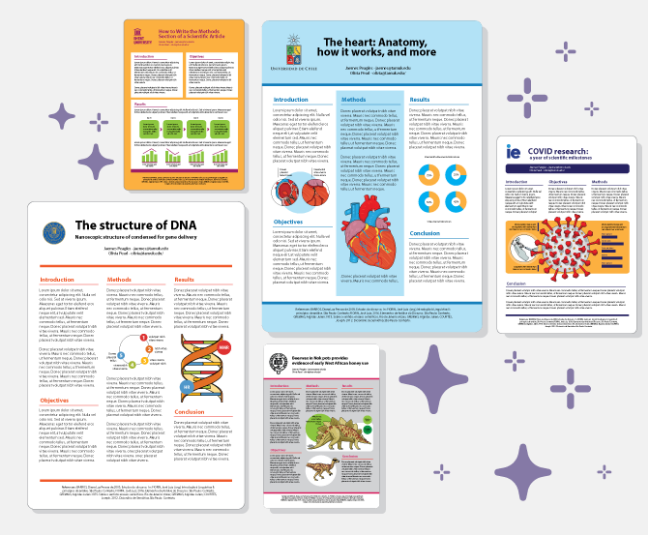Elemental mapping enables researchers to gain a deeper understanding of the elemental composition, distribution, and dynamics within various materials. Scientists can use advanced techniques such as X-ray fluorescence microscopy, X-ray microanalysis, and atomic resolution imaging, to visualize and analyze the intricate patterns of elements in solids and liquids. This article will give a comprehensive exploration of elemental mapping, shedding light on its techniques, significance, and wide-ranging applications. Whether investigating the elemental composition of a biological specimen, examining the distribution of contaminants in environmental samples, or analyzing the composition of alloys, elemental mapping serves as a valuable tool for unraveling the intricacies of our natural and synthetic world.
What Is Elemental Mapping?
Elemental mapping is the process of visualizing and analyzing the spatial distribution of elements within a sample or specimen. It involves the use of various analytical techniques, such as scanning electron microscopy (SEM) coupled with energy-dispersive X-ray spectroscopy (EDS) or electron probe microanalysis (EPMA), to generate elemental maps. These maps provide valuable information about the elemental composition and concentration across different regions of the sample, enabling researchers to understand the distribution and associations of elements within the material.
Elemental Mapping Background
Elemental mapping has gained significant importance in materials science, geology, environmental studies, and other fields where the characterization of elemental composition is crucial. Traditional elemental analysis techniques, such as bulk analysis, may not provide sufficient spatial information. Elemental mapping, on the other hand, allows researchers to visualize the elemental distribution at a micro or nanoscale level, providing valuable insights into the sample’s structure, composition, and properties.
Purpose of Elemental Mapping
The purpose of elemental mapping is to gain a comprehensive understanding of the spatial distribution of elements within a sample. By mapping the elemental composition, researchers can identify patterns, variations, and correlations between different elements. This information can be used to investigate elemental segregation, phase distribution, diffusion pathways, and elemental interactions within a material. Elemental mapping also helps in identifying elemental impurities, analyzing elemental homogeneity, studying elemental migration, and assessing the effectiveness of material synthesis or fabrication processes. Overall, the purpose of elemental mapping is to reveal valuable insights into the elemental characteristics and behavior of a sample.
X-Ray Techniques Used In Elemental Mapping
Elemental mapping involves the use of various X-ray techniques to visualize and analyze the distribution of elements within a sample. Here are some commonly used X-ray techniques in elemental mapping:
X-Ray Fluorescence Microscopy
X-ray fluorescence microscopy (XFM) is an analytical technique used for elemental mapping, which involves the detection of characteristic X-rays emitted by a sample upon X-ray excitation. With XFM, researchers can determine the elemental composition and spatial distribution within a sample. This technique offers high spatial resolution, allowing for the visualization of elemental variations at the micron or even sub-micron scale. It is employed in various scientific fields, including materials science, geology, environmental science, and biology, for applications such as identifying elemental contaminants, studying elemental interactions, and characterizing complex samples. X-ray fluorescence microscopy plays a significant role in elemental mapping, enabling researchers to gain valuable insights into the elemental composition of diverse samples. Access this website to learn more about X-ray Fluorescence.
X-Ray Microanalysis
X-ray microanalysis is a technique widely used in elemental mapping, which uses the spatial visualization of elemental distribution within a sample. By utilizing X-ray spectrometry, X-ray microanalysis can accurately determine the elemental composition of different regions in a sample. This technique relies on the interaction between the sample and an X-ray beam, which causes the emission of characteristic X-rays specific to each element present. The emitted X-rays are then detected and analyzed to map the distribution of elements within the sample. X-ray microanalysis provides valuable information about the elemental composition, concentration, and spatial arrangement of elements, allowing researchers to understand the chemical nature and heterogeneity of materials.
Graphene Window Technique
The Graphene Window Technique can be utilized in elemental mapping by incorporating it into the setup of transmission electron microscopy (TEM) experiments. The graphene windows, which act as transparent membranes, allow for imaging and analysis of samples in liquid environments. To use this technique for elemental mapping, one can prepare the liquid cell by encapsulating a thin hexagonal boron nitride crystal between two graphene windows. This creates a controlled-volume liquid cell that can hold the sample of interest in a liquid medium. The sample can then be analyzed using TEM, and elemental mapping can be performed by utilizing techniques such as energy dispersive X-ray spectroscopy (EDXS) or electron energy loss spectroscopy (EELS). The high spatial resolution provided by the graphene window technique enables detailed elemental mapping of nanoparticles or other samples in liquid environments.
Atomic Resolution Imaging
Atomic resolution imaging, when used in elemental mapping, provides detailed information about the arrangement and distribution of atoms in a material. With the advancement of scanning transmission electron microscopy (STEM) techniques, it is now possible to image materials with sub-angstrom resolution, allowing for the visualization of individual atoms and their spatial arrangement. By acquiring atomic-resolution images, researchers can precisely identify the positions of different elements within a sample and create high-resolution maps of their distribution.
This technique is particularly valuable for studying nanomaterials, interfaces, and defects, as it provides insights into the atomic-scale structure and composition of these materials. Atomic resolution imaging can be combined with spectroscopic techniques such as energy-dispersive X-ray spectroscopy (EDS) to correlate elemental information with the imaging data, enabling comprehensive elemental mapping studies. Overall, atomic resolution imaging is a powerful tool in elemental mapping, enabling researchers to unravel the intricate details of material structures and understand the relationships between elemental composition and properties.
Spatial Resolution
In elemental mapping, spatial resolution refers to the ability to distinguish and resolve small features or regions of interest within the sample. The higher spatial resolution allows for the detection of subtle variations in elemental composition at a finer scale. This capability is particularly important when studying complex materials or heterogeneous samples where different elements may be present in varying concentrations or arrangements. Achieving high spatial resolution in elemental mapping techniques, such as electron microscopy coupled with energy-dispersive X-ray spectroscopy (EDS), enables researchers to accurately map the elemental composition of materials at the microscopic or even nanoscale level. This information is valuable for understanding the spatial relationships between different elements and their impact on the properties and behavior of materials in various scientific and technological applications.
Multi-Element Analysis Techniques
Multi-Element Analysis techniques, such as wavelength dispersive X-ray spectroscopy (WDS) and electron energy loss spectroscopy (EELS), allow for the simultaneous analysis of multiple elements in a sample. These techniques offer the advantage of obtaining elemental maps for several elements simultaneously, providing comprehensive information about the elemental composition and distribution within the sample.
Dynamic Motion Measurement With Graphene Liquid Cells
Dynamic Motion Measurement techniques, often employed with Graphene Liquid Cells, enable the real-time observation and analysis of dynamic processes at the nanoscale. By encapsulating the sample in a liquid cell with a graphene window, elemental mapping can be performed while observing changes and movements within the sample, providing insights into dynamic elemental processes.
These X-ray techniques, each with its own advantages and capabilities, play a crucial role in elemental mapping by allowing researchers to analyze and visualize the distribution of elements within a sample, leading to a better understanding of its composition, structure, and properties.
Materials Science Applications Of Elemental Mapping
Materials Science Applications of Elemental Mapping is the utilization of mapping techniques to investigate and comprehend the distribution, composition, and behavior of elements within various materials. This field involves the application of analytical methods to gain insights into the elemental characteristics of materials and their impact on material properties and performance.
Characteristic X-Rays
Elemental mapping using characteristic X-rays is a powerful technique that allows for the determination of the spatial distribution of elements within a sample. When a material is exposed to high-energy X-rays, excited atoms emit X-rays with distinct energies specific to the elements present. Researchers can create detailed maps of elemental distribution when they analyze and detect these emitted X-rays using energy-dispersive or wavelength-dispersive X-ray spectroscopy. These maps provide valuable information about the composition, concentration, and spatial arrangement of elements within the sample. This technique is widely used in materials science, geology, biology, and other fields to gain insights into the elemental composition and spatial characteristics of samples, facilitating a deeper understanding of their properties and behavior.
Distribution Of Elements In Solids And Liquids
The distribution of elements in solids and liquids refers to the spatial arrangement and concentration of different chemical elements within a sample. This information is essential for understanding the composition and structure of materials. Through techniques such as X-ray fluorescence microscopy, electron microscopy, and spectroscopy, researchers can analyze and map the distribution of elements at a microscopic or even atomic scale. This provides insights into the elemental composition of the sample, the presence of impurities or contaminants, and the variations in elemental concentrations across different regions. By visualizing and quantifying the distribution of elements, scientists can uncover important details about the formation, properties, and behavior of solids and liquids.
Real-Time Monitoring Of Element Composition, Function, And Structure Over Time
Real-time monitoring of element composition, function, and structure over time involves continuously tracking and analyzing changes in elemental properties during dynamic processes. By employing elemental mapping techniques, researchers can observe and quantify alterations in the elemental composition, distribution, and behavior of materials as they undergo various transformations, reactions, or degradation processes. This real-time monitoring enables a deeper understanding of how elements contribute to the functionality, performance, and structural changes of materials, leading to improved material design and optimization.
120% Growth In Citations For Articles With Infographics
Mind the Graph is a revolutionary platform that offers scientists a unique and effective way to enhance their research impact. With a proven track record of success, the platform has shown remarkable results, contributing to a staggering 120% growth in citations for articles that incorporate infographics. By leveraging the power of visual communication, Mind the Graph empowers scientists to create captivating and informative infographics that effectively convey complex scientific concepts. This enables researchers to reach a broader audience, engage readers, and increase the visibility and impact of their work. With Mind the Graph, scientists can unlock the potential of visual storytelling and revolutionize the way their research is perceived and shared in the scientific community. Sign up for free.

Subscribe to our newsletter
Exclusive high quality content about effective visual
communication in science.





